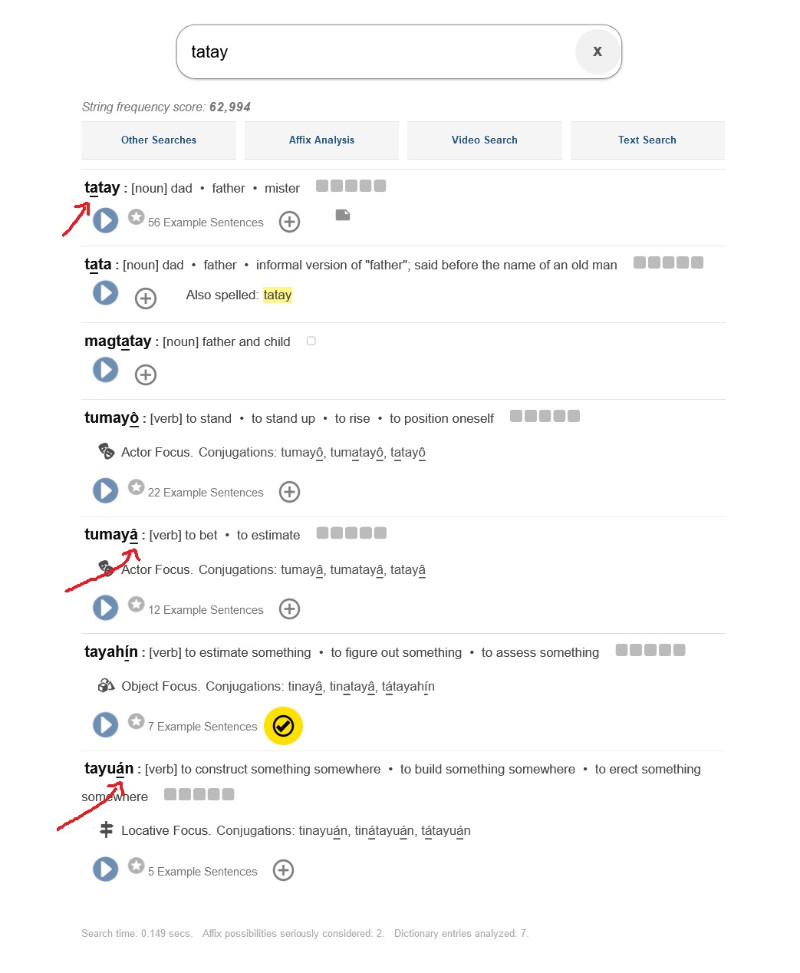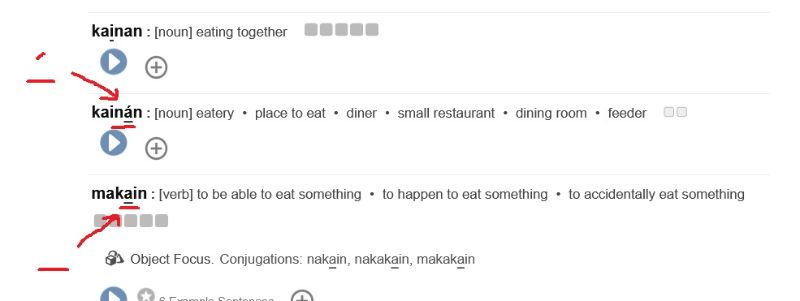The underlines indicate the syllable/s that is/are stressed.
The location of the stress can change the meaning of a word. For example: "lum
ayò" means "to be farther away", but "lumay
ô" is "to move away".
Lum
ayo ang b
agong opis
ina mo sa iy
óng bahay? = Is your new office farther away from your house?
Lumay
ô ka sa kanil
á. = Move away/Distance yourself from them.
The definition given in the Dictionary for "tumay
â" should only be "to bet".
"Tayah
ín" is the usual verb form used for "to estimate".
Tayah
ín (infinitive/imperative) = itin
ayà, itinat
ayà, tatayah
ín (also tatay
ahin)
(I think the conjugations given in the Dictionary for "tayah
ín" are not correct.)
Itin
ayà niy
á na mga lim
áng metro ang ta
ás ng puno`. = He/She estimated that the tree is about 5 meters high.
Itinat
ayà na/Itinat
ayang mga lim
áng metro ang ta
ás ng puno`. = It is estimated that the height of the tree is about 5 meters.
We use either "tumat
ayà" or "itinat
ayà" for the adjective "estimated".
Tumat
ayà na/Tumat
ayang mga lim
áng metro ang ta
ás ng puno`. = The estimated height of the tree is about 5 meters.
Ang itinat
ayà na/itinat
ayang ta
ás ng p
unò ay mga lim
áng metro. = The estimated height of the tree is about 5 meters.
The definition for "tayu
án" may also include "to stand on something". Ex. "Tayu
án mo ang s
ilya para makita mo kung an
ó ang nasa lik
ód ng pad
ér." = Stand on the chair so that you can see what's behind the wall.








